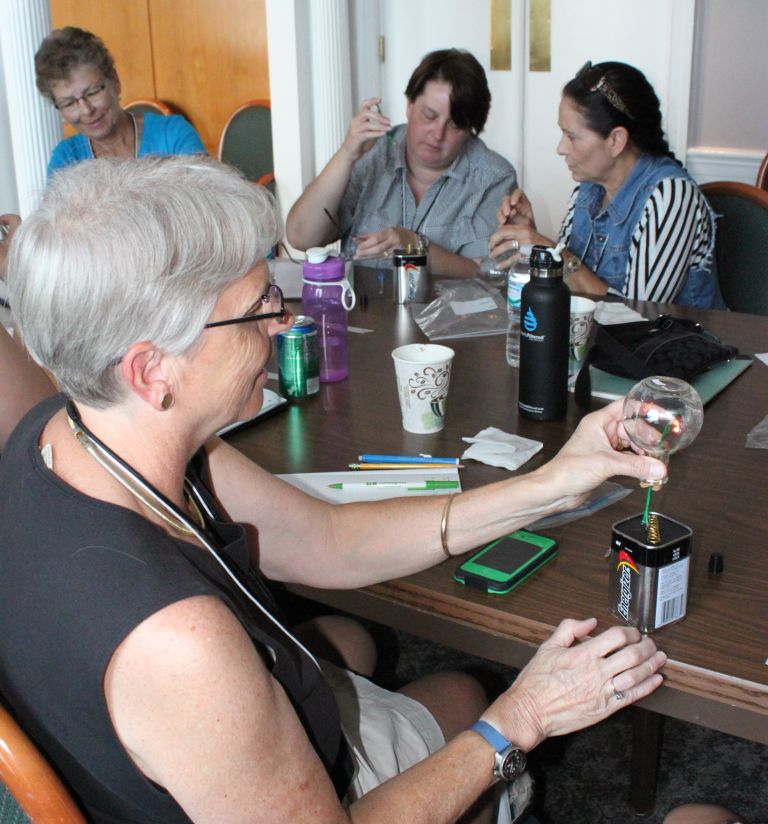Exploring New Energy Resources Through SSEATS
Karen Manning, science teacher at the Park School in Massachusetts, attended the 2014 Smithsonian Science Education Academiesfor Teachers, "Energy: Past, Present and Future" in Washington, DC. During the academy, teachers spent a week behind-the-scenes in Smithsonian museums and national research facilities. Working with fuel cells as a new and emerging technology was an incredibly impactful experience for Karen, and led her to seek out new opportunities that she could share with both students in her classroom and students across the country.

Participating in the Smithsonian's Summer Science Education Academies for Teachers (SSEATS) Workshop on Energy: Past, Present, and Future was a real catalyst for me personally and professionally. The discussions and exchange of ideas with the incredibly diverse group of individuals involved in the workshop--classroom teachers, museum educators, individuals involved in energy education at the national level, engineers, curators, and scientists--inspired me to want to be more deeply involved with energy education. Then hearing directly from scientists and engineers who are currently involved in new and developing energy technologies stimulated me to pursue my own investigations into sustainable energy sources, specifically fuel cells. Working off the model fuel cell car experience I had during the workshop, I worked on creating a proof-of-concept lesson for my students that would help demystify the way hydrogen fuel cells operate. While working on this lesson, I began to wonder if there were any other emerging technologies under development that were truly sustainable and did not require an external energy source for operation. That is how I came upon MudWattTM Microbial Fuel Cell kits. Microbial fuel cells are essentially batteries made using mud or soil. Since the SSEATS workshop, I have been working to develop middle school curriculum modules about microbial fuel cells and the wide range of inquiry-based investigations that stem from the use of these devices, including energy transformations and conservation, electric circuitry and electricity generation, microbiology, biodiversity, and roles of organisms in the cycling of nutrients through the soil ecosystem.
I can honestly say that the exposure to new ideas and the connections with engaging, creative people at the SSEATS summer workshop on energy provided the inspiration to pursue these new avenues in my career.
In the coming weeks we will be featuring more individuals who have participated in SSEC initiatives, professional development workshops, or leadership development institutes. If you would like to learn more about any of our upcoming opportunities, please visit our Upcoming Events page.